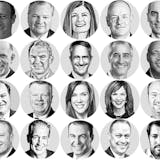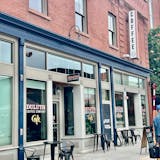Racial minorities in the Twin Cities are far more likely than whites to be denied a mortgage, regardless of their credit scores, the location of the home and other key factors, new research from the Federal Reserve Bank of Minneapolis shows.
The denial rate for Asian applicants in the region was 3.2%, for Latino applicants 3.3% and for Black applicants 4.3%. The denial rate for white applicants was 1.7% in the three-year period studied by the Fed.
"We have one of the largest homeownership gaps in the country, and it's something that hasn't changed much over time," said Alene Tchourumoff, the Fed's senior vice president of community development and engagement, in an interview.
"We were wondering: What are some of the characteristics that might explain the variations in homeownership?" she added.
The Fed used more detailed information, including the applicant's credit score, that was not available or incorporated into previous analyses of mortgage denials, to get a better understanding of why people of color are less likely or less able to buy a home. Homeownership, for many people, is critical for building long-term wealth.
Tchourumoff said many previous studies were not able to adjust for factors such as credit scores in the mortgage application process, leaving those studies open to criticism that they failed to reflect the most critical considerations in the underwriting process.
This analysis was based on federal Home Mortgage Disclosure Act mortgage data for nearly 100,000 borrowers in the seven-county Twin Cities metro area. It focused on those who applied for a 30-year conventional mortgage, which tend to be the lowest-risk mortgages, from 2018 through 2020.
The research — done by Ben Horowitz, Kim Eng Ky and Katie Lim — controlled for the location of the property, the loan-to-value ratio of the mortgage and the debt-to-income ratios of the borrower.



